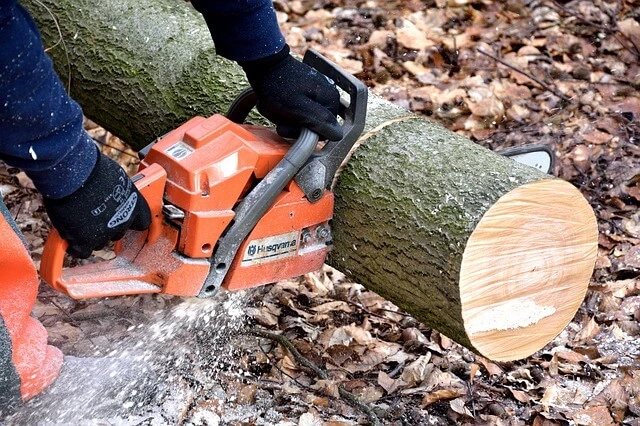What is a tree fort?
A tree fort is a building made next to or around branches or the tree trunk of mature trees above ground level. These are for recreation, workspace, habitation, or just an observation. The treehouse is a good place to store food from scavenging animals.
Safety checks for the tree

A tree fort can cause damage to the tree. Fasteners can lead to an infection, and too much weight on the branches may cause root stress. You can minimize the damage by considering the following steps.
- Use one or two supports to minimize stress. That way, your house tree shares the burden equally without straining one side or corner. Stress leads to the collapse of the tree fort.
- Few punctures will minimize tree damage and prevent an increased amount of bacteria from entering the tree.
- Fasteners should not be too close because it weakens that section of the tree.
- Avoid sling cables and ropes as they cut through the bark when the structure moves.
- Make sure the fort is stable and healthy.
- Mount structures to the tree.
- Inspect the wood structure for any wood decay due to insects or weather.
- Choose a strong, sturdy tree for the treehouse.
- Build the treehouse low to the ground.
- Keep the woodworking house away from electrical wires.
- Surround the area located below the treehouse with a protective surface, such as wood mulch.
- Plan a safe way to get up and down the treehouse.
Weight consideration
Consider spreading the weight among several trees if you want a heavy tree fort. The load should be at the tree base and not limited to one side. The platform should be built closer to the trunk and add diagonal bracing to increase strength and support.
Work on a treehouse weight calculation and follow the rules for load distribution. When done installation, use a Standard Limb TAB that supports between 8,000 and 10,000 pounds of force. However, trees like pines and cedars support less force, while harder trees like oak and hickory support more force.
The design phase
Using more than one tree has its advantages. Less bracing will be used, and the treehouse will be bigger than that on one tree. Figure out how high the tree fort should be. The height should not be scary but exciting.
Sketch how you want the tree fort. However, that could change as you build. A 3D picture gives more detail on the structure of the tree fort, and your local planning department can also assist with a plan. Do not forget to plan for tree growth when creating your design. Most treehouse plans will factor in this.
Materials
You will need materials to work with, and these include:
- Timber
- Nails
- A pulley
- Galvanised joist hangers
- Decking material
- Galvanised lag screws and washers
- Rafter ties
Tools
Hand tools should include a saw, hammer, square, level, adjustable wrench, and tape measure. Other tools are a table saw, a miter saw, and a router. Power tools should include a cordless drill and a jigsaw. A ladder is a necessity.
Creating solid platforms
- Install some braces for additional strength below the platforms. Figure out where your tree platform will go. A straight tree, with a nice canopy over the deck, gives plenty of shade to the habitat.
- Take one of the two 2-8-8 beams and draw a centerline. Drill holes for the lag bolts on that line and place the board against the tree. Use a ladder to hold it in place.
- Figure out where the second beam will go.
- Center and mount a pair of 2-6-8 joists. Trim off excess bark from the tree.
- The opening on both sides of the tree between the first 2 joists should be the same.
- Set the spacing for the rest of the joists.
- Cap the ends of the joist with one 2-6-8 on each side.
- Make sure the deck is level in all directions. Adjust it slightly if necessary.
- Attach the adjustable joist hangers, one in each corner. Use a strap to keep the 2-6-8 from moving while you are hammering. Probably not an issue if you are using screws.
- Set one 2-6-8 knee brace and cut the corner side of the knee brace at a 45-degree angle.
- Secure a joist hanger around the knee brace into the tree and cut the top of the knee brace, flush with the joists.
- If the deck frame is strong and level, start laying out the deck boards.
- Screw the boards down.
- Make a square hole around the tree.
Decking
A piece of full-length decking should be placed 3 inches from the tree to allow growth and shank nails into each joist. Using hammer ring shank nails as spacers between boards, you should work toward the margin of the framework.
Safety rails
Build railings to code. No part of the railing should have holes equal to or greater than 4 inches. The top rail should be 36inches. If the treehouse is high, you may consider following the residential code for balconies at 42 inches.
Ladder, pulley, or both?
A pulley seems to be great fun for kids, and it also allows you to pull materials to the top. Attach a basket to the pulley. A ladder allows easy access into the tree fort. It should be safe and sturdy. So it is better to have both if there is enough material.
How to build a treehouse without a tree

- Sink four sturdy posts deep into the ground where your treehouse will sit.
- Secure the posts with concrete.
- Attach a wooden base or platform of your choice to the posts.
- Start building your treehouse on top of the platform.
- Add accessories of your choice such as stairs or fencing.
Use pressure-treated posts to support the tree structure. They should be buried deep enough for full support. Round telephone poles are also ideal because they last longer underground. Sinking your posts into the ground gives a better base for your treehouse to sit on. Secure the poles with concrete. Attach a wooden platform to the posts. You can then build the treehouse on top of the platform and add stairs or a pulley. See how much DIY treehouses cost.
- Grain and Sheen: Teak Oil versus Danish Oil Uncovered - January 10, 2024
- The Cherry on Top: Crafting the Perfect Cutting Board - January 9, 2024
- Polyurethane Water-Based vs Oil-Based: Choosing the Right Finish - January 8, 2024